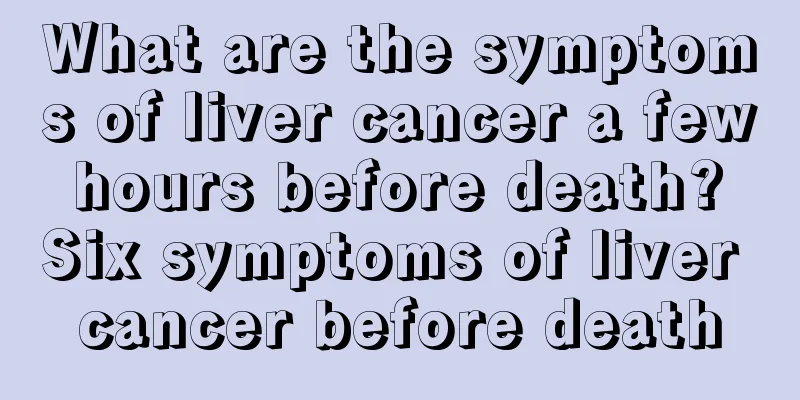What are the pathological manifestations of skin cancer

|
The environment we live in today has many pollutants, air and chemicals that affect our skin, so the impact on our skin is great. Some may also develop skin cancer due to radiation factors, so many friends will be relatively worried that they will get skin cancer. 1. Basal cell carcinoma: 80% of skin cancers are basal cell carcinomas. If diagnosed early and treated properly, they are completely curable. According to their histological morphology, they can be divided into the following three types: ① Subepidermal basal cell carcinoma: The surface skin may be intact or accompanied by ulcers. A cystic cavity is formed in the center of the cancer nest, and the cancer cells around the cystic cavity often undergo vacuolar degeneration. The cancer cells may be tubular or glandular in structure, arranged in cords, nets or islands. ② Superficial ulcerative basal cell carcinoma: It is often multiple, with cancer nests appearing as solid masses, nests or cords, infiltrating from the basal layer to the deep layer. ③Basal squamous cell carcinoma: The tumor is composed of two components, namely, squamous cell carcinoma nests and keratinized pearls within basal cell carcinoma. (II) Squamous cell carcinoma 20% of skin cancer is squamous cell carcinoma. It goes without saying that early treatment is likely to cure it, but the risk of it spreading is quite high. Among the people who die from skin cancer each year in the United States, squamous cell carcinoma is the main cause. This cancer grows on the trunk and also has a high tendency to metastasize. Cancer cells are papillary, nested, cord-like or glandular structures and can infiltrate into the deep dermis or subcutaneous tissue. According to the degree of differentiation of cancer cells, it is divided into 4 levels. Level I: It is a differentiated and mature squamous cell with intercellular bridges and cancer beads. Cancer beads are the characteristic structure of squamous cell carcinoma and are composed of concentrically arranged keratinized cancer cells. Grade II: The main component is prickle cells, with obvious atypia, including increased cell volume, unequal nuclear sizes, different staining depths, frequent nuclear division phases, rare cancer pearls, and incomplete keratinization in the center. Grade III: Poor cell differentiation, most cells in the epidermis are disordered, and the cell volume is increased. The nucleus is large and obviously atypia, nuclear division phases are common, there is no cancer strain, but some cells are poorly keratinized. Grade IV is an undifferentiated type, with no prickle cells, no intercellular bridges and cancer strains. The cancer cells are small and spindle-shaped, with elongated nuclei and dark staining, accompanied by necrosis and pseudoglandular structures. The above article introduces to friends the question about the common pathological manifestations of skin cancer. I believe that everyone now has a better understanding and knowledge of skin cancer. Skin cancer is a relatively serious disease. Once this disease occurs, we must treat it in time. |
<<: How to check for skin cancer during pregnancy
>>: Can skin cancer patients eat with normal people?
Recommend
What is the cause of stomach acid after meals?
If the symptoms of stomach acid after meals are m...
What quilt should you cover yourself with to keep warm in winter?
The weather is cold in winter, so the quilt is ve...
Is lung cancer contagious? Analysis on the contagiousness of lung cancer
According to medical surveys, as environmental qu...
Biological immunotherapy for intestinal tumors
Intestinal tumor biological immunotherapy can be ...
Most bladder cancers are not highly malignant. What is the survival rate of advanced bladder cancer?
Bladder cancer has obvious early symptoms, so mos...
What is the best eye cream
Eye cream is a product that can prevent wrinkles ...
What is the reason for peeling face
Facial peeling occurs in winter, which is related...
How to treat prickly heat on the buttocks
The buttocks is a part of the body where children...
What are the benefits of back tapping?
There are many meridians on the human back, and d...
Sequelae of amputation
The human body is strong yet fragile, and it is e...
Can't the cervical cancer vaccine prevent all cervical cancers? Do I need to choose the cervical cancer vaccine?
Prevention of cervical cancer is a compulsory cou...
Is pain on both sides of waist caused by kidney deficiency?
People who often sit at work will experience back...
What oil is best for liver cancer patients? Four common questions about liver cancer diet
Some liver cancer patients are afraid to eat anyt...
What are the benefits of massaging Shousanli
Shousanli acupoint is an acupoint. If we can unde...
Can gout patients eat onions?
Onion is a herb and also a spice and seasoning. M...









